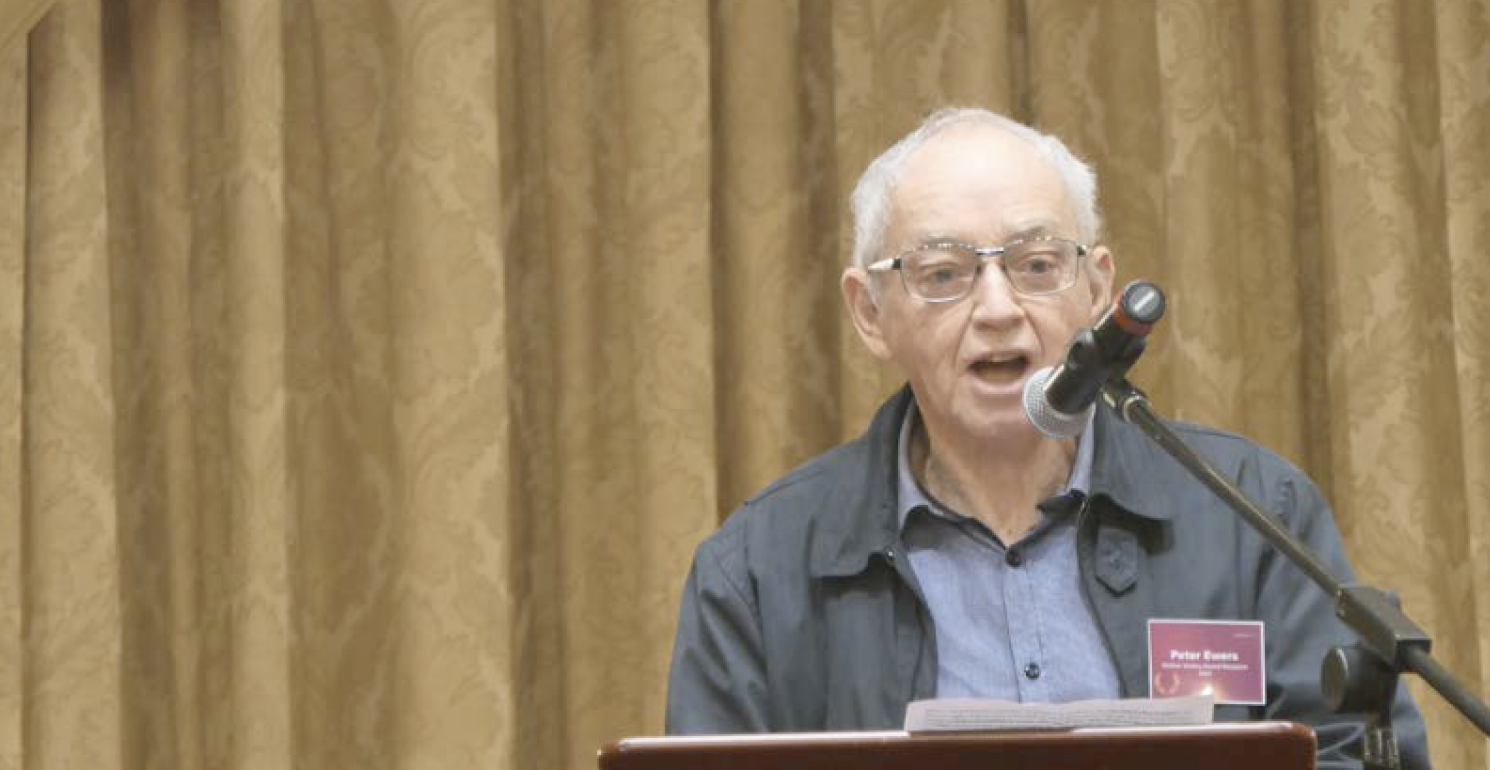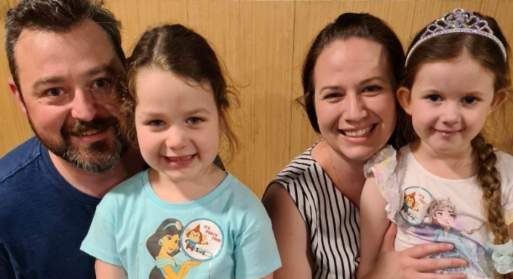Peter Ewers was awarded with the 70 year Kellion Victory Medal at the 2023 awards ceremony. We are delighted to share the speech he gave.
While having my tonsils out in 1952 I was diagnosed with juvenile diabetes mellitus. I was six at the time.
Earlier that year I had a severe case of measles and it was thought it was the measles and my autoimmune system fighting the disease that resulted in me developing diabetes. I was living in Melbourne at the time and was later admitted to a hospital in St Kilda Rd for about 10 weeks.
Three months later, I was admitted for another 10 weeks. In hospital I was injected with insulin twice a day. Compared to today’s needles, however, the ones used on me in hospital looked enormous.
When I returned home my parents had purchased glass syringes which they kept in a Vegemite jar, with a cotton pad dropped into the bottom and soaked in methylated spirits. My endocrinologist started me on a regime of two injections a day which was unusual because most type 1 diabetics were having one injection in the morning at that time.
Because my parents had to pay for everything in those days, my father sharpened my needles on an emery or sharpening stone. The only way to test my blood sugar levels was by adding a chemical to my urine which was heated 70 year Kellion Victory Medal recipient Peter Ewars over a Bunsen burner flame.
My father somehow hooked this up to our gas stove. The mixture would occasionally explode, meaning that Dad had to clean it off the ceiling a few times.
Food was measured using tiny spring-operated scales and governed by the amount of insulin taken, which was set by my endocrinologist. At first all the crusts were cut off my sandwiches, which I loved because I hated crusts. Sadly, when they changed my diet to portions, the crusts were back on.
As a six-year-old, I think I was more able to accept the restrictions that diabetics experienced then. It was probably harder on my older brother having to suddenly eat healthy food.
As life went on, I had experiences similar to other children of my age, except for the occasional hypo. I think that this normality was mainly due to my caring mother plus the experienced specialists looking after me.
Having been told at the time of diagnosis that the average period of survival was about 30 years, I have enjoyed a very fortunate long life.
As I grew up, other than not attending my friends’s birthday parties, I was very active in playing sport, like football, squash, golf and table tennis. As a teenager I did a lot of surfing, both board riding and body surfing and generally kept up with my contemporaries while still being aware of my condition and the restrictions I needed to follow.
When I started tertiary education to become an architect, because some of the classes were at night, I had to carry a box with all my equipment in a big bag. One of the courses in the curriculum was metalwork where I was able to turn up on a lathe a special metal container which carried my insulin bottle, my glass syringe and spare needles. This container is now in the Victorian Diabetes Museum.
In my adult life, having married a very caring and loving wife whom I call my guardian angel, I lived a contented life with two children. We experienced many overseas and around Australia trips with only a few mishaps that fortunately my guardian angel was able to take care of.
About 10 years ago I participated in Diabetes WA’s Dose Adjustment For Normal Eating (DAFNE) course which changed the whole method of eating to adjusting insulin to suit the amount of food, mainly carbohydrates, eaten.
Having been told at the time of diagnosis that the average period of survival was about 30 years, I have enjoyed a very fortunate long life with only a few complications that I have been able to conquer.





